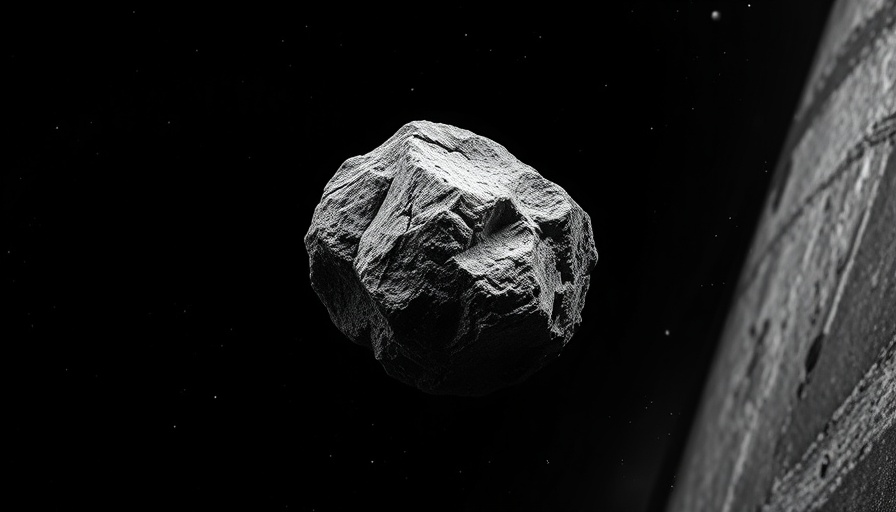
An Asteroid Named YR4: Key to Unveiling Solar System Mysteries
In December 2024, astronomers discovered asteroid 2024 YR4, a near-Earth asteroid (NEA) that raises foundational questions about the cosmos and its evolution. Initially labeled as a potentially hazardous object due to its trajectory that crosses Earth's orbit, refined estimates have since lowered the concern of a collision in 2032 to a mere 1%. This significantly diminishes the reasons for alarm, yet it opens up avenues for exploration—missions that could push the boundaries of our understanding of both Earth's past and the broader solar system.
The Mission: A Tactical Approach to Exploration
Researchers Adam Hibberd and T. Marshall Eubanks propose an upcoming mission to study 2024 YR4 up close, presenting a remarkable opportunity to collect data about the early solar system. The mission could kick off as early as 2028, coinciding with an ideal launch window. Following in the footsteps of successful missions like Hayabusa 2 and OSIRIS-REx, this exploration could yield vital samples and insights, enhancing our geological and historical knowledge of these celestial bodies.
Anticipated Discoveries: Asteroids and the Origins of Life
Asteroids like 2024 YR4 are remnants from the solar system's formation, approximately 4.5 billion years ago. Understanding the composition and structure of such bodies can provide invaluable clues about the conditions that led to the formation of planets, including Earth. Scientists are particularly interested in organic compounds or 'building blocks' of life that may exist within these asteroids, offering insights into how life may have originated.
Exploration as a Defense Strategy: Collaborative Global Efforts
Working in collaboration with organizations like ESA and NASA, ongoing strategies for asteroid monitoring and potential impact deflection are imperative. The evolution of technology in asteroid detection has improved dramatically, as evidenced by the evolving understanding of YR4's trajectory, which has enhanced the global community’s readiness should Earth face a possible impact. With an estimated diameter between 40m and 100m, the potential destruction from a YR4 encounter, while currently deemed unlikely, cannot be ruled out entirely.
The Scientific and Public Interest in Near-Earth Objects
The newfound knowledge from studying YR4 fits into broader societal excitement regarding space exploration. The public's fascination with celestial bodies extends beyond entertainment; it intersects with real-world implications such as planetary defense and preparation for possible future threats. As our observational capabilities expand, we are likely to discover more NEAs, questioning how society prepares and reacts.
A Call to Armchair Astronauts: Why This Matters
For readers enthusiastic about space exploration and scientific advancement, this unfolding mission represents an opportunity not only for academic growth but also for engaging with the essential work of planetary defense. By remaining informed about asteroid monitoring and exploration efforts, individuals can participate in discussions on the importance of space initiatives and their role in humanity's safety.
The forthcoming mission to asteroid 2024 YR4 is a reminder of the delicate balance between curiosity about our universe and the prudent caution required to ensure the safety of our planet. As we gaze up at the stars, we must also consider the objects swirling within our solar neighborhood and the implications they have for life on Earth.
 Add Row
Add Row  Add
Add 




Write A Comment